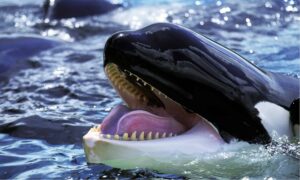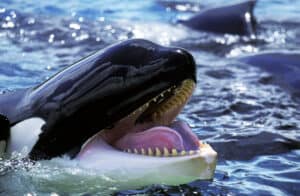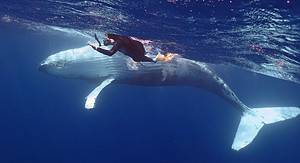Whales are the largest animal on Earth! The blue whale can grow to 98 feet long and weigh 400,000 pounds. You must have to eat a lot to maintain a 400,000-pound body. We are familiar with sharks with razor-sharp teeth that tear into their prey, but what about whales? We are certainly less afraid of sharks than whales. Do all whales have teeth? How do whales eat? What do whales eat? How big are whale teeth (if they have any)? Read on to answer, do whales have teeth?
What is a Whale?
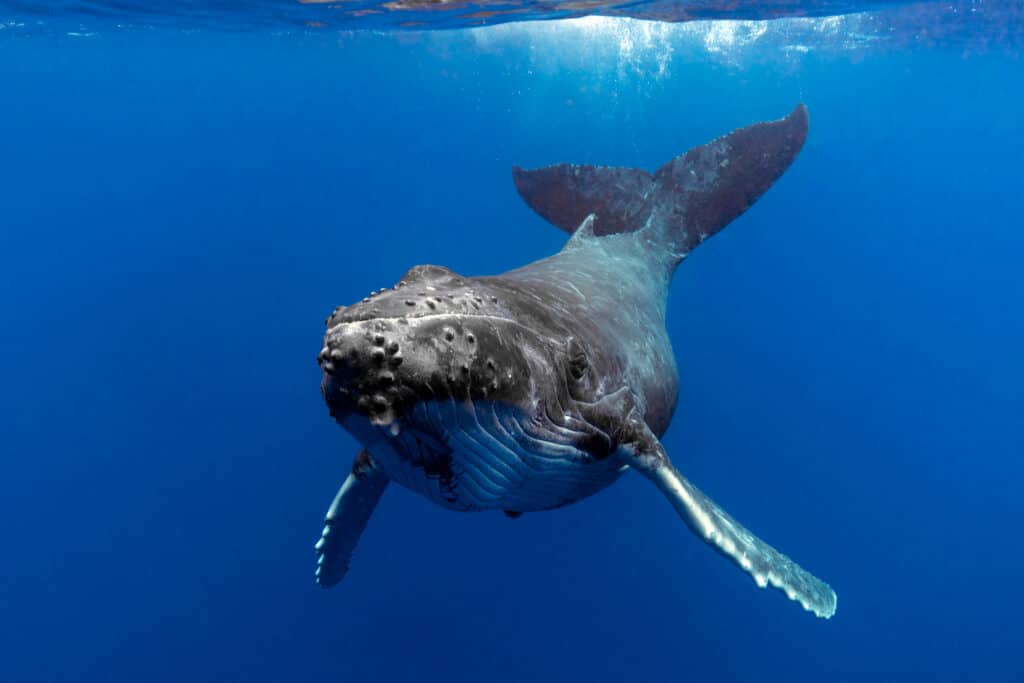
Whales are Cetaceans.
©Craig Lambert Photography/Shutterstock.com
Let’s start by explaining what a whale is. You may have some concept of a whale, like the massive humpback whale that glides through the ocean, breathes through a blowhole on top of the head, and can breach the water by leaping and contorting, landing with a big splash. But the term “whale” applies to all animals that are Cetaceans. Whales include dolphins, porpoises, belugas, killer whales (orca), and even those unique-looking narwhals. Whales are not fish but marine mammals; they breathe air, are warm-blooded, and nurse their babies. Common whale species you may be familiar with include the blue, humpback, fin, right, and sperm whale.
Do Whales Have Teeth?
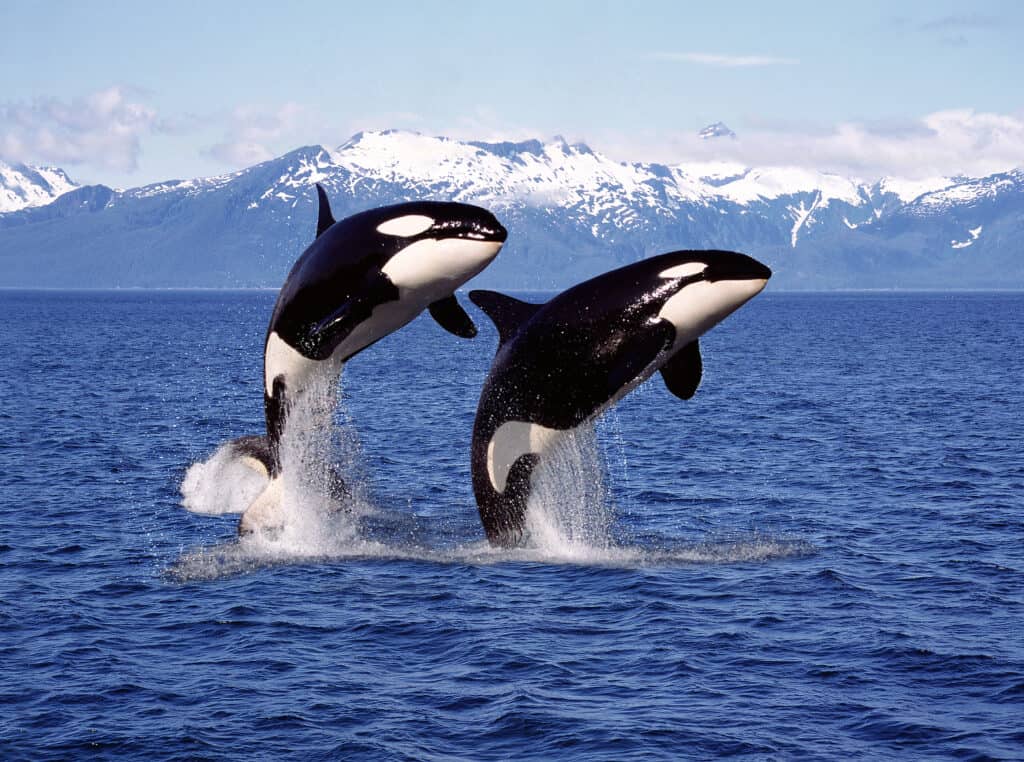
A variety of whales have teeth, but some do not.
©slowmotiongli/Shutterstock.com
Some whales have teeth, some whales do not have teeth. Whales are categorized into two groups based on teeth; toothed whales and baleen whales. Of course, they could have made it easy and called the second group the toothless whales, but there are some interesting facts about baleen. Baleen is not teeth but a series of fringes of keratin. Some describe the rows of thin bristles like the bristles on a toothbrush. Some of the longest baleen plates are in the bowhead whales, where the baleen can reach lengths of 13 feet long! If your bedroom is 12 x 12, these baleen bristles are about that long!
What Kind of Whales are Baleen Whales?

Do whales have teeth? Some have baleen plates in their mouth.
©jo Crebbin/Shutterstock.com
Let’s start with the whales that do not have teeth. There are 14-16 species of whales that are baleen whales grouped into four different families; rorqual, the right, gray, and pygmy right whale. Here is a list of the most commonly recognized baleen whale:
- Blue
- Humpback
- Fin
- Bowhead
- Gray
- Sei
- Common Minke
- Antarctic Minke
- Bryde’s
- Gray
- North Atlantic Right
- North Pacific Right
- Southern Right
- Pygmy Right
- Omura’s
What Kind of Whales are Toothed Whales?
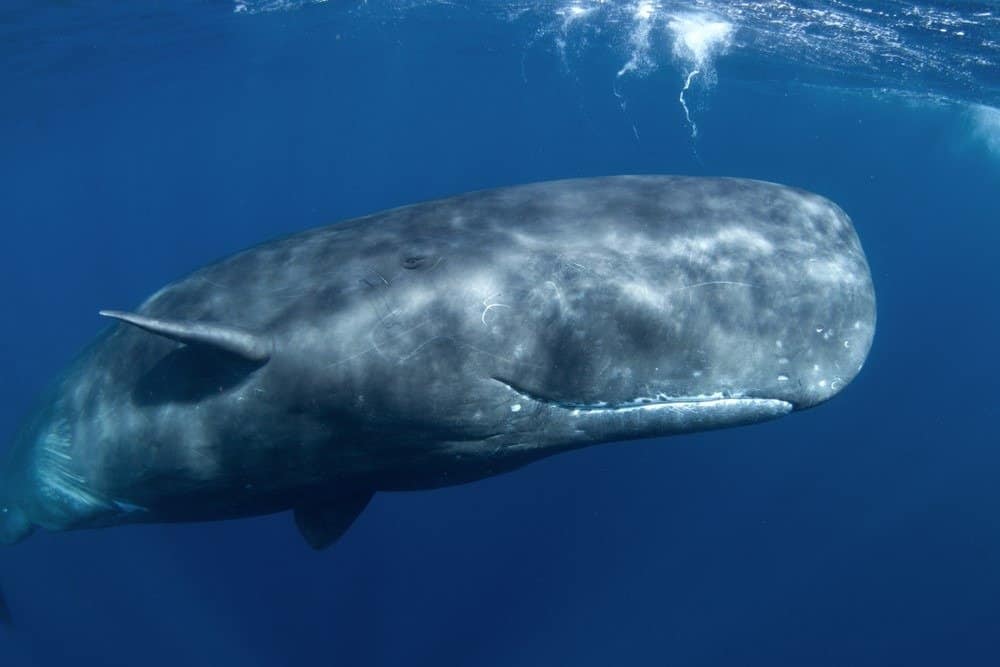
Sperm whales have large teeth.
©Martin Prochazkacz/Shutterstock.com
Toothed whales are broken down into 10 different families. This group of whales does have teeth…some really big teeth! Did you know the tooth of a sperm whale can get to be 4-8 inches long! 8 inches! Wow, that’s about the size of your hand! Toothed whales have cone-shaped teeth, with some only having a row on the bottom row (like sperm whales). Here are the 10 toothed whale families:
- Sperm Whale
- Dwarf and Pygmy Sperm Whale
- Beluga Whale
- Narwhal
- Oceanic Dolphin
- Amazon River Dolphin
- South-Asian River Dolphin
- Franciscana River Dolphin
- Yangtze River Dolphin (now extinct)
- Porpoise
How do Baleen Whales Eat?
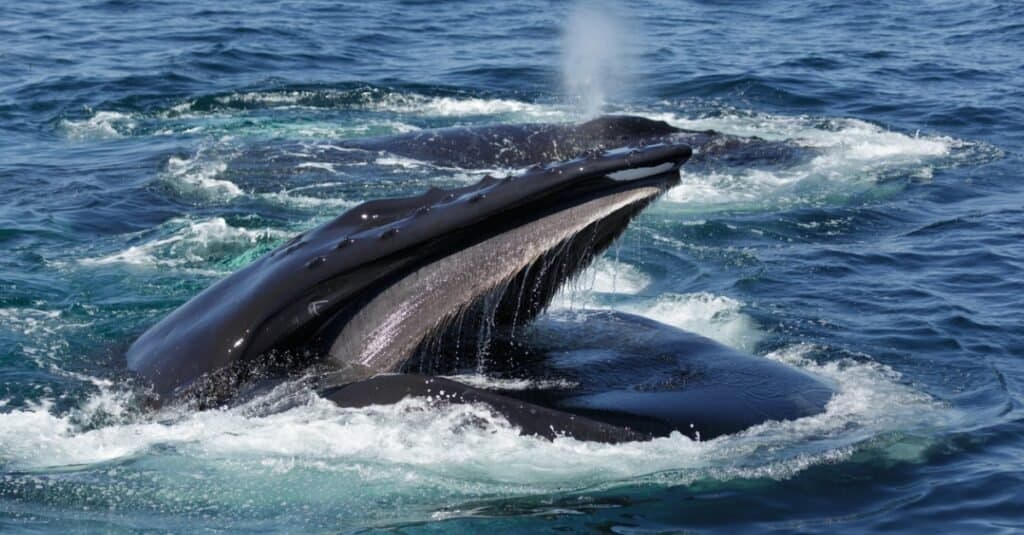
The baleen plates filter small fish and other parts of their diet, such as krill.
©iStock.com/stephenallen75
Let’s take a look at how whales eat. We understand how you bite an apple with your front teeth and use your molars to chew it up before swallowing, but how do whale teeth work, and what if you don’t have any teeth? Baleen whales don’t have teeth; they have a baleen plate, a series of bristle-like fringes that filter small fish, zooplankton, and krill. Here are the three ways that baleen whales eat:
- Skimming and Grazing: These types of whales swim slowly with their mouths wide (really wide) open, taking in whatever gets in the way. Bowheads and right whales use this technique.
- Gulpers: These whales will find a shoal of small fish and chomp a whole chunk, sieving out the seawater that is devoid of fish. Whales like blue, humpback, and sei whales eat like this.
- Bottom Feeders: Whales that are bottom feeders will troll the bottom of the ocean and scoop up chunks of the bottom, including the sand and mud, then sift out what they don’t need. The gray whale is the most common bottom feeder.
What do Baleen Whales Eat?
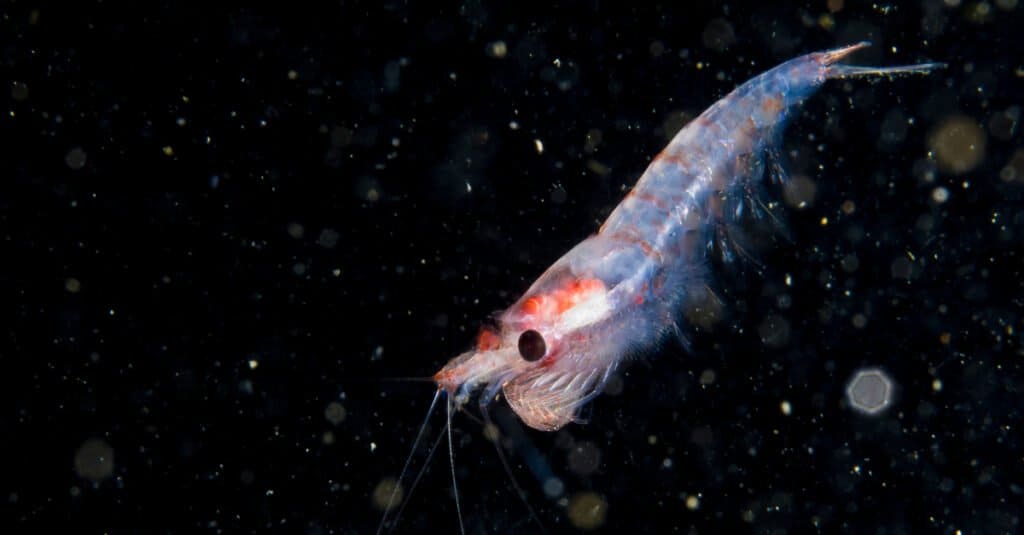
Krill are an essential part of the blue whale diet.
©RLS Photo/Shutterstock.com
Baleen whales, the largest of the whale species, eat the smallest food! Baleen whales survive off of tons and tons of zooplankton, krill, and small fish. For example, the massive blue whale may eat 6 tons of krill daily! Just for a little reference, did you know an African elephant can weigh up to 7 tons? That’s almost the equivalent of what a blue whale eats…each day!
How do Toothed Whales Eat?
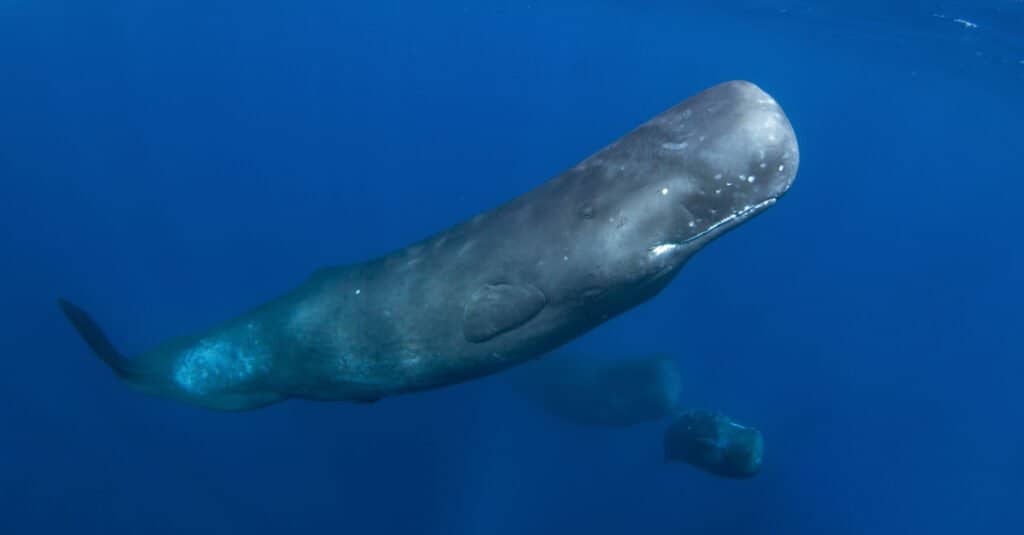
Sperm whales only have teeth on their bottom row.
©Martin Prochazkacz/Shutterstock.com
Now looking at toothed whales, you have a little more variation. With 10 unique families and various teeth, you have to look at some examples. The narwhal, for example, only has one tooth. The long sword-like protrusion coming off their face is actually a tooth. Only the males have this tooth that can reach lengths of up to 10 feet. Narwhals do not have teeth in their mouths; instead, they suck up their food and swallow it whole.
Whales like the sperm whale use a snag-and-swallow technique since they only have teeth on the bottom row. They feed on squid, rays, fish, octopus, cuttlefish, and sharks. They can consume almost 2,000 pounds of food in one day!
Killer whales, or orcas, are known to hunt in packs and work together to surround their prey before using their sharp teeth to tear it to pieces. They don’t use their teeth to chew their prey but to attack and kill it before swallowing chunks whole. Killer whales have 40-56 teeth that interlock. Surprisingly their teeth are around 3 inches long, about as long as a credit card.
Amazon River dolphins have molar-like teeth that they actually chew their food with. As freshwater dolphins, they feed on freshwater fish, turtles, crabs, and shrimp.
What do Toothed Whales Eat?
The diet of toothed whales varies by species, but we have mentioned some of their favorite food. Toothed whales are carnivores meaning they primarily eat meat. They are considered opportunistic feeders meaning they will eat what they can find. The main foods include smaller fish, squid, octopus, cuttlefish, rays, and shrimp. Killer whales will eat seals and other pinnipeds, and river dolphins feast on freshwater fish, crabs, and shrimp.
You can see that although all these mammals are considered whales, there is a wide variation in toothed and baleen whales in how they eat and what they eat. Yet their technique for acquiring nutrition seems to work for each species, from big teethed sperm whales to toothless minkes and everything in between.
The photo featured at the top of this post is © slowmotiongli/Shutterstock.com
Thank you for reading! Have some feedback for us? Contact the AZ Animals editorial team.



